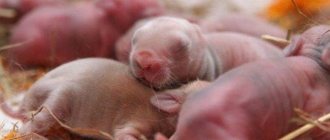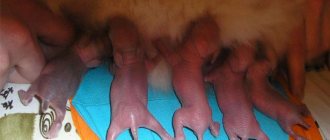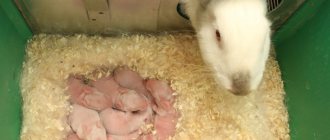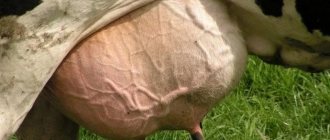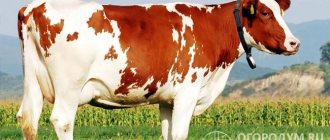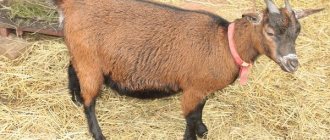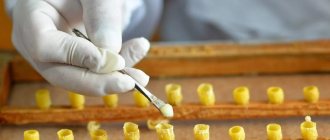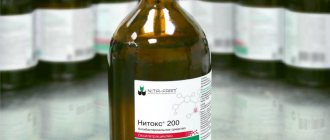From time to time, farmers have to face the problem of how to feed baby rabbits without a female rabbit. The reasons for the need may be different, but the solution is always equally necessary. In this situation, efficiency and accuracy of actions directly affect the survival of babies. Any mistake can lead to the death of the offspring in just a few hours.
How to feed baby rabbits without a mother rabbit
How to feed baby rabbits without a mother rabbit?
Regardless of the reasons why the mother cannot feed the cubs, they urgently need breast milk. There are several ways to help rabbits:
- place newborns with another rabbit;
- force-feed;
- resort to artificial feeding.
Moving in with another female
You can feed newborn rabbits with the help of another lactating female, if one is available. To do this, the female rabbit is removed from the cage, and the foundlings are rubbed with down taken from her nest. Foster babies are placed directly in the center of the queen cell between the native rabbits
It is important to wear gloves before the procedure. After 30–40 minutes, the female is returned to the cage
Attention! You can place foster rabbits with a lactating female if she gave birth at about the same time as her natural mother. Babies should have a slight age difference (3–6 days)
Force feeding
This method is applicable when the female rabbit is healthy and does not show aggression towards children. It is worth enlisting the support of another person for the procedure to be successful.
The female is laid on her side, and the babies are brought to the nipples one by one. A sign of satiety is a bloated tummy. Rabbits are applied several times a day for 2–3 days. During this time, an inexperienced mother usually gets used to her new role.
Artificial feeding
Rabbit milk is fatty and nutritious; there is no complete substitute for it. Newborn rabbits are fed:
- goat milk;
- mixture for puppies and kittens;
- baby food.
Attention! Cow's milk is not suitable for feeding rabbits; it is not fat enough and contains a small range of nutrients necessary for the normal development of rodents. The mixture in powder form for puppies and kittens is diluted according to the instructions, and the one intended for children is made more concentrated
The liquid is drawn into a syringe without a needle; a pipette is placed on the tip, making several holes in it. It looks like a bottle
The mixture in powder form for puppies and kittens is diluted according to the instructions, and the one intended for children is made more concentrated. The liquid is drawn into a syringe without a needle; a pipette is placed on the tip, making several holes in it. It looks like a bottle.
Artificial feeding of baby rabbits
Newborn rabbits eat 1–2 ml of milk per day. At the age of 5–7 days, the amount of food is gradually increased. Before each feeding, babies' tummies are massaged with a fingertip so that they can defecate.
What milk to use
There are several options for foods that can be fed to baby rabbits. It is believed that the composition of rabbit milk is most similar to dog milk. But it is unlikely that any farmer will be able to find a dog that has recently given birth and provide her with baby rabbits.
In addition, even if such a female is present nearby, she will not accept newborn rabbits, and they will not be able to suck dog milk. You can purchase a special mixture at the veterinary clinic intended for feeding puppies, kittens, and rabbits. Some farmers practice feeding formula to infants; it is also suitable for these purposes. But it should be diluted in a more concentrated form than indicated on the package.
If circumstances are such that it is impossible to get the mixture, then you should pay attention to goat milk. It is also similar to rabbit in composition, although it has less fat content. The big advantage of this milk is that in rural areas it is usually very easy to get.
If problems arise with the goat product, then you can try feeding the rabbits with cow's milk. But this option is less preferable, because cow's milk has minimal fat content. To make it more nutritious, it is recommended to add condensed milk. This should be done in one to one proportions.
In a word, there are several answers to the question of how to feed baby rabbits. But it is necessary to choose milk or mixture in such a way that the product’s composition is close to that of rabbit milk. Otherwise, the babies will quickly weaken and may even die.
In addition to milk for feeding, you also need to take care of the instrument. For the smallest rabbits, a syringe without a needle is ideal. You can also purchase special feeding kits, which are sold in veterinary pharmacies. When the rabbits get older, you can switch to a regular pipette, and then a pacifier. At the age of one month, animals already drink milk from a saucer perfectly well. Sometimes they start doing this earlier.
What to feed a fledged female?
The body of a female who has given birth constantly needs nutrients. After all, she spent a lot of energy on the birth and gestation. And continues to spend them in the process of feeding the cubs.
So, a rabbit’s diet should include:
- bran/oats (nutrition basis changes every week);
- crude protein;
- mineral supplements;
- greens and corn;
- in winter - dry stems and leaves of legumes, boiled potatoes,
- in summer - nutritious greens (clover, alfalfa).
If the owner opts for concentrated feed, it should contain bran, oats and peas. A nursing mother is given about 200 grams in addition to the main food. hay, 50 gr. cake and meat and bone meal as a source of calcium.
House for a mother rabbit and her babies
The approximate amount of food for a nursing mother depends on the age of the rabbits. It is presented in the table below.
Table 1. Approximate daily amount of food for a nursing rabbit
| Age of cubs | Food volume |
| 1-10 days after birth | 320 g |
| 11-20 day | 440 g |
| End of 3rd week – 1 month | 570 |
| 1 month and beyond | 720 |
How many babies can a mother rabbit feed?
If the litter is not the first, and the mother constantly feeds the cubs, she can simultaneously provide food for 8 rabbits. With increased milk content, the figure can increase to 11, with decreased milk production it can drop to 6.
The feeding process is characterized by the following factors:
- An ordinary female has 8 nipples, so the same number of babies can suckle at the same time.
- If there are more than 8 cubs, the most agile ones will feed fully. It’s good if the mother produces a lot of milk, then after the first eight the remaining rabbits will eat.
- Stronger individuals in the fight for the mother's breast can trample weak brothers. And the rabbit herself is capable of accidentally crushing them. Therefore, the farmer needs to remove them from the nest in time and move them to a nursing rabbit with fewer offspring.
How often do babies eat?
After birth, each baby rabbit begins to eat 5 ml of milk per day. The owner must ensure that the kids eat at least 2-3 times daily. Ideally, they should be applied to the mother's breast 5 times a day. In this situation, each baby eats 1 ml of milk in one go.
Typically, a nursing female produces from 50 to 170 grams. nutritious milk depending on the number of rabbits. The first 2 decades of lactation account for 61% of all milk that appears during the entire feeding period. Therefore, at this time, babies should eat as intensely as possible.
Well-fed rabbits immediately fall asleep
How can you tell if baby rabbits are eating?
Usually the female feeds the babies in the dark or when no one is looking, so it is extremely difficult to notice the feeding process itself. The caring owner begins to worry about whether all the rabbits are getting enough to eat.
You can check if the kids are full as follows:
Inspect the tummies. Under the thin pink skin, you can easily see the belly and even see the crowns. In well-fed babies, the skin on the stomach is taut and there are no folds. Hungry people have sunken bellies and wrinkled skin. Weigh baby rabbits periodically. If babies do not gain weight for several days in a row, they clearly do not have enough milk
At the beginning of life, rabbits should regularly gain weight
Pay attention to behavior. Well-fed rabbits fall asleep immediately after eating, sleep soundly, do not twitch their paws or jump up.
Hungry animals look exhausted and lethargic, and constantly squeak.
See where the cubs are lying. The babies, who are constantly lying outside the nest, in most cases tried to find their mother. They never found her and remained hungry.
If the offspring is clearly larger than what the female rabbit can feed, several cubs are transferred to another female. They must be cleaned of their mother's down in advance and rubbed with down from the new nest so that they acquire the smell of a second home. This is the only way the new mother will accept them.
Little rabbit
Caring for newborn fur babies
The rabbits are kept in a separate cage (another enclosure allocated for the entire herd) until they get stronger. Maintain the temperature in the rabbitry at up to 18°C. Regardless of what time of year the female gives birth, it is necessary to maintain the temperature in the enclosure. Rabbits that develop fever and fever are kept in a cool cage.
The cub will survive the coldest winters and hot summers with a caring mother if the farmer provides all the necessary conditions:
The nest is checked at least once a day. If there are several rabbits in a separate cage, it is necessary to inspect all rodents. If your baby is gaining weight worse, you should increase the amount of vitamins in complementary foods. There is no need to rush to plant young animals. For the first couple of days, the young animals are protected from any draft or hypothermia. Due to the low temperatures in the enclosure, the young animals' ears and paws get frostbitten. With the mother of rabbits, things are even worse: a healthy mother of fluffies develops diseases that impair the functioning of internal organs
Protecting the rabbit is the primary task of a farmer who cares about his own farm. The mother should be treated with caution, because from the first days after giving birth, the rabbit behaves aggressively towards humans. There is no point in disturbing the female again. If you frighten a female rabbit, you can harm both the female and the young
How quickly the rabbits begin to grow and get stronger depends on the farmer’s first steps.
As soon as its eyes open (in the first 7-10 days), the little rabbit takes a closer look at the world around it, studies the space in which it will have to live. A female who has recently given birth needs special conditions without harsh sounds or noise. You can pick up rabbits that have managed to grow up. There is no point in disturbing the rabbit again. A rodent's good sense of smell helps the mother sense foreign odors from a person's hand. How often can a cage with young animals be cleaned?
It is possible and necessary to clean the enclosure and ventilate the place where furry rodents live, but not more than once a day. To completely clean the cage, the young animals and the female should be removed. This human behavior brings a lot of stress to the rabbit. If you can avoid unnecessary irritability of animals, then there will be no problems with young animals. At any age, rodents need care and attention from the farmer.
Measuring parameters of baby rabbits after jigging
After depositing the baby rabbits, it is very important to carry out a measuring procedure, determining the parameters of the babies. There are a huge number of methods that allow you to analyze indicators, but a beginner, first of all, should pay attention to weight, gender and health status. Individuals that develop slowly must be placed in separate cages, since healthier brothers can crush an inferior rabbit.
Rabbits that are lagging behind in weight gain should be switched to a diet with increased nutritional value. So in a few weeks they will be able to catch up with their relatives. At 45 days, babies can begin to be fed with crushed concentrated feed without coarse fiber. This helps improve nutrient absorption.
Monitoring food sufficiency
It is necessary to constantly monitor whether the rabbit has enough food on offer. A good indicator for this is a full belly. A dense and rounded belly indicates that the rabbit was well fed. A well-fed cub is active and calm; lethargy or irritation indicates an insufficient diet. A sign of malnutrition is a baby rabbit's poor sleep at night.
Discharge should be regular; normally, rabbit feces should have a greenish color; if digestion is impaired, they will be brown.
It is best to start the first complementary feeding with finely grated fresh carrots and chopped hay. Artificially fed rabbits should be able to eat all types of food at 30 days, and drink from a drinking bowl on their own after 45 days.
It is quite difficult to feed baby rabbits that have given up without their mother on your own - it will require a lot of effort and time. The goal can be achieved by maintaining cleanliness in the keeping of the offspring, sterility when preparing milk formula and mandatory massage of the cubs' tummy at each feeding.
Acceptable age
Up to 2 weeks, the rabbits are completely under the supervision of their mother and feed exclusively on milk. From the age of 17 days their teeth change. Young animals are characterized by a collective instinct, therefore, imitating the mother rabbit, the cubs try the food that is given to the adult animal. They chew grass stems, eat carrots and mixed feed.
From 24 days, rabbits no longer need the same volume of milk; its amount is halved. The body is able to digest other foods. From this time on, rabbits are given green, succulent and protein foods, carbohydrates and minerals, but limit food with a lot of fiber so as not to cause bloating. The state of the digestive system is assessed by stool; it should be green. Physiologically, young animals are already able to exist separately, but the body is not yet strong enough. Jigging will negatively affect their immunity and development.
By 30 days, the share of milk secreted in a female rabbit is 10%; in young animals, an obligate microflora has been formed in the intestines. The average weight of a baby rabbit already reaches 500 - 700 g, babies feed on their own, freely consume mixed feed, concentrated feed, and grass. Therefore, they will be able to be without a mother without harming their development, but their condition must be closely monitored.
Young animals are allowed to be removed at a minimum age of 28-30 days, provided that the cubs are healthy and developing well.
Each farm adheres to its own planting dates, the time is determined by the intensity of reproduction, the characteristics of cultivation and the season.
- In case of compacted births (mating on the 2nd day after birth), the rabbits are separated from the female rabbit at 28 days. The female is already carrying new offspring and is given days to recover before giving birth.
- With semi-condensed breeding, when mating is carried out on the 10th day or two weeks after birth, the young are kept near the mother for up to 35 days.
- The gentle method involves jigging for 35 or 40 days; such litter is hardy and has good weight gain. In this case, the young animals will be ready for slaughter for meat at the age of 115 days.
- Broiler hatching involves weaning from the mother at 2 months or 70 days. Used in growing large and hybrid breeds.
The timing of weaning of young animals during the cold period has its own peculiarities. Adult rabbits tolerate temperature drops down to -5 degrees. It is more difficult for rabbits to cope with negative temperatures; in cold weather they die. In winter, they require maternal warmth, nutritious milk and energy feeds: fresh hay, grain, mineral supplements, fish oil. Due to the energy required to stay warm, weight does not increase as quickly. Litter born in winter is moved into a separate cage no earlier than two months of age.
There are several jigging options.
- Whole. In this case, the entire litter is removed from the female, distributed among cages taking into account development and weight.
- Temporary. The rabbits are separated, but the female rabbit is allowed near them for a while. The method allows the cubs to be transferred to separate housing gradually, without causing a negative reaction to a sudden change in diet. Reduces the likelihood of hardening of the mammary glands in the female.
- Sorting. Only the largest rabbits are removed, leaving the smaller ones, giving them the opportunity to spend time with their mother and get stronger, and it is easier for the female to feed a smaller number of cubs.
The latter method is suitable for queens who have excess milk, which reduces the likelihood of developing mastitis.
Causes of death of baby rabbits due to poor nutrition
There are situations when babies die for no apparent reason. Sometimes you should look for the culprits of death in an incorrectly formulated diet.
Common causes of death in animals associated with nutritional errors:
- Upon reaching 1.5 months, the rabbits are taken away from their mothers, but by this time their digestive system is not yet strong enough. A sudden transition to a new “culinary” level can be fraught with serious consequences for the health of children, including death;
- stale moldy grain, the degree of deterioration of which can be determined both by appearance and by its musty smell, can cause serious disruptions in the intestines of long-eared animals;
You should not feed moldy grain to your rabbits.
- Sprouted potatoes can also cause diseases in rabbits, especially if the potatoes are rotten or old.
You should refrain from feeding your babies sprouted potatoes.
Expert advice
Using the recommendations of experienced rabbit breeders, you can avoid situations where improperly organized feeding can lead to deterioration in health, or even death, of newborn rabbits.
If the female rabbit is thirsty or her food is low in vitamins and minerals, the animal may become aggressive and eat the babies.
Therefore, it is important to give the female a drink immediately after giving birth and make sure that water is available to her, as well as establish adequate nutrition. It happens that there is not enough milk. Then the rabbits can be given to be raised by a female who has no problems with lactation
Newborns need to be placed between the cubs of their eared mother so that they acquire the same smell, and left for a while. Sometimes a mother rabbit may begin to ignore her babies. If this happened due to stress, a feeling of fear (they often put things in order in the cage, take the cubs, disturb the peace and privacy of the animal), it is important to move the female to a secluded comfortable place, lay her on her back, placing the newborns to the nipples. If the reason is a hormonal imbalance, experts advise mating with a male, which will calm the animal.
A female rabbit bears offspring several times throughout the year, so by taking care of her adequate nutrition, you can maximize the conservation of her body’s resources and get healthy offspring.
Tips for bottle feeding
In cases where the rabbit has died or refuses to feed the babies, you should begin this responsible mission yourself.
Self-feeding baby rabbits
Selecting milk
The only thing better than mother's milk is mother's milk! Unfortunately, children are not always given the opportunity to fully enjoy its most valuable nutritional properties. In cases where this is not possible, you can try to select milk that is similar in composition.
The closest approximation in structure is deer milk
Comparison of the nutritional properties of milk from different animals
| Animal | Content, % | |||||
| Water | Squirrels | Fats | Lactose | Salts | ||
| Cat | 81,5 | 9,3 | 3,5 | 4,9 | 0,7 | |
| Cow | 87,3 | 3,4 | 3,6 | 50 | 0,7 | |
| Deer | 65 | 14-12 | 17 | 2,8 | 1,5 | |
| Goat | 87,9 | 3,7 | 4,0 | 4,5 | 0,9 | |
| Sheep | 84,0 | 5,1 | 6,1 | 4,2 | 1,0 | |
| Dog | 77,0 | 9,7 | 9,3 | 3,1 | 0,9 | |
It is also saturated with proteins and fats, but getting it seems problematic. Based on these data, it can be seen that deer milk is optimally close in structure to rabbit milk.
So popular all over the world, cow's milk, due to its characteristics, is not entirely suitable for feeding eared animals. An insufficiently high percentage of protein content removes it from the list of potential breast milk substitutes. Next after deer milk in terms of reliability is dog milk.
Feeding rules
In the process of self-feeding babies, you should follow simple rules:
- buy dog milk powder at the pet store;
- dilute it with water, following the recommendations specified in the instructions, and bring the liquid to a temperature of 360C;
- It is necessary to feed babies only from a pipette or a special insulin syringe in which the needle has been previously removed;
When self-feeding, use a thin pipette
- it is necessary to pour in the milk with extreme caution: it is very important to avoid getting liquid into the nose, otherwise the baby may choke;
Be careful not to get any liquid into your nose during feeding.
- Overeating should not be allowed: you can determine the baby’s level of satiety by his even, smooth tummy.
The degree of saturation of the baby rabbit with food can be determined by its smooth tummy
In nature, there are cases where responsible and caring cats fed rabbits at will, but such situations are quite rare.
The nuances of keeping bottle-fed rabbits
In the first hours of life, rabbits deprived of maternal care, as a rule, die. If you respond to the situation quickly, you can save the babies and raise them healthy.
Rabbits should be placed in a warm place under a lamp.
Advice from experienced farmers on caring for bottle-fed rabbits:
- it is always necessary to breed several females at the same time: if one of them abandons the offspring, the babies should be placed in the nests of other rabbits;
- if a suitable mother is not found, it is recommended to put the babies in a warm place, preferably under a lamp: make sure that the lamp does not burn the fragile bodies of the baby rabbits;
- Since at this age the long-eared animals have not yet learned to empty themselves, it is necessary to massage their tummies: massage should be done only in one direction - from the navel to the hind limbs.
Be sure to massage the belly several times a day: this will help the rabbits to empty their bowels.
Treat your babies with the utmost responsibility and check their condition every few hours.
Essential Vitamins and Minerals
As a rule, a lack of vitamins and minerals is observed in rabbits in winter and early spring. There are several vitamin and mineral complexes that are very successfully used by rabbit breeders:
- "Chiktonik" - includes about three dozen vitamins and basic amino acids. The drug is given in five-day courses, every month, at the rate of 1 ml per liter of clean water;
- “Prodevit” is a vitamin complex designed for weakened animals suffering from ulcers, rickets, liver diseases, and pathology of the mucous membranes. The drug is available in injection and oral form;
- “E-Selenium” is a drug intended for the correction of developmental and growth disorders, exacerbation of infectious diseases, treatment of poisoning and other pathologies. Available in injection and oral form.
Mineral supplements represented by mineral stones: “Chika” and Karli have proven themselves very well. You can also use "Bio-iron", supplemented with essential microelements, and the vitamin and mineral supplement "Ushastik".
Composition of a nursing rabbit's diet
The more often an animal eats, the better. It is recommended to feed the female rabbit after giving birth, depending on the time of year. If the birth occurred in the summer, preference is given to green feed (mixtures of oats, forbs, alfalfa, clover, legumes, corn). In winter, the diet is based on good quality hay, boiled potatoes and root vegetables, legumes, bran, and silage. From dry food, it is better to choose cake (sunflower or soybean), oats and peas, as they are rich in protein. The additives used are those that were used during the gestation period.
In any season, the animal is fed concentrated feed. Concentrates - mixtures of cake, bran, oats. They are digested almost completely. In order to have more milk, it also makes sense to switch to special ready-made foods that improve lactation,
Another option is mash, which is prepared from crushed products. A nursing rabbit can be treated to the following types:
- Alfalfa and crushed oats (in a ratio of 60 to 40).
- Alfalfa, barley and corn (60:30:10).
- Alfalfa, bran, legumes, wheat (60:10:10:10:10).
Vitamin and mineral complexes are added to such mixtures. You can offer the female diluted powdered or sour milk: fresh milk is not allowed, as it can upset the animal’s digestion. Mixers are used warm and wet; for this purpose, the grain is soaked in water. This food combines both food and drink, has a beneficial effect on lactation, normalizes digestive processes and is especially useful in winter.
Cleanliness and sterility during artificial feeding.
The proverb “cleanliness is the key to health” comes in handy here. A young, fragile body, and even one with an unvaccinated immune system, can get harmful bacteria and microbes. Therefore, I strongly recommend boiling all dishes, pipettes and nipples. Use the mixture in accordance with the instructions on the package; it is generally prepared for a period of no more than a day. Store goat milk in the refrigerator for no more than 3 days, and warm it up to 37-40 degrees before feeding. Before feeding, wash your hands thoroughly with laundry or baby soap and dry with a clean towel.
Feeding rabbits in winter
Often your pets may experience vitamin deficiencies in winter or early spring. Along with food, rabbits must be given vitamins of the ADE group, and in some cases even B12. All other vitamins will be synthesized in their body. If you give your rabbit good hay, silage or fermented green food in winter or spring, then the rabbit’s body will fully provide itself with vitamin A. If the hay is bad, then feeding rabbits in winter will require you to add vitamin A concentrate-250ME per kilogram to the food. live weight in (mash). Also, a source of vitamins A and D can be fortified fish oil: for young animals - 0.3-0.5 grams, for adults in the non-breeding period - one gram; for pregnant rabbits - two grams, for nursing rabbits - three grams per head per day. If you are looking for a source of carotene for your pets, then look no further than pine and spruce branches.
A rabbit can get a lot of vitamin E from sprouted grains. It is given to adult rabbits per head per day. Baker's yeast is also rich in vitamin E. You can give four to six grams of yeast per rabbit per day for five days, then take a break for three days. Throughout the year, the animals' diet should include table salt. Adults - 1-1.5 grams; for young animals 0.5-1 gram per day per head.
Also use bone meal and fish ash, chalk, and feed phosphate. These products belong to mineral feeds. There should be one to four grams of them in a rabbit’s diet per head per day.
Now let's talk a little about succulent food. You can ferment them for the winter. Chop cabbage, turnips, herbs (preferably legumes). Immerse the carrots in barrels, sprinkle them evenly with table salt at the rate of one or two percent by weight and compact until the juice appears. Then place a wooden circle on top and a weight on it. For an adult rabbit, there should be no more than three hundred grams of such feed per day, for young animals - one hundred grams per head. When feeding silage and fermented succulent food, be sure to give the rabbits chalk at the rate of one to four grams per hundred grams of feed.
Diet of a newborn female
It is necessary to constantly feed the female, since her body spends a lot of energy and nutrients on the production of lactation products. The amount of milk produced reaches 170 g per day. To compensate for protein losses, to feed eight babies, it is necessary to add up to 70 g of crude protein to the female’s diet.
During the lactation period, feed requirements for the female increase several times. It is advisable to change the type of food every week, alternating oats, bran, mineral supplements, corn and greens.
Feeding pattern of a lactating female at different ages of rabbits:
- From the first to the tenth day of feeding - 320 g;
- From 11 to 20 - 440;
- From the beginning of 4 weeks to a month - 560 g;
- Starting from the age of one month of the offspring - 700 g.
Concentrated feeds at any time of the year should include peas, oats, and bran. During lactation, an additional 150-200 g of hay, 50 g of cake, and 10 g of meat and bone meal are given.
Minerals are included in the rabbit’s diet without fail.
Important! Their insufficient quantity leads to a decrease in the amount of milk secreted
Is it possible to feed baby rabbits without a mother rabbit?
The question of the possibility of artificial feeding of rabbits worries any livestock breeder who is faced with the described problem. Of course, it cannot be said that the survival rate of newborn rabbits in the absence of a nursing mother is one hundred percent. Without milk, they quickly weaken, freeze and die. Therefore, it is necessary to quickly make a decision and begin artificial feeding.
The survival rate of born babies depends on many factors, but the age of the rabbits is fundamental. If their mother died immediately after childbirth or during it, then the likelihood that the babies will survive is minimal. They definitely need to receive maternal warmth and nutrients from milk. If this does not happen, then the little rabbits quickly fade away. But if you act quickly and correctly, then newborns can be saved. If some time has passed since birth, it is easier to feed the rabbits.
Another factor influencing survival rate during artificial feeding is the breed of rabbit. It is believed that meat rabbits are easier to feed than decorative ones. In the case of ornamental breeds, the chances of survival are very low.
Any box can fulfill its role. It is better if it is not too spacious so that the kids can snuggle up to each other and thus warm themselves. You need to put a warm thing in the box, you can cover the rabbits on top, but provide air access.
Newborn animals lose their sucking instinct very quickly, so it is necessary to start feeding them as quickly as possible. This must be done within two days, otherwise the rabbits will definitely die.
If you take the right actions and monitor the rabbits, ensuring a constant supply of food, they will certainly get stronger and grow. Practice shows that sometimes artificially fed rabbits look even stronger than those that grew up with their mother. Therefore, you should not worry that the animals will remain weak and will not be able to develop normally.
What else needs to be done when artificial feeding.
In the first hours and days, the little rabbit has no instinct to empty the stomach and bladder. In nature, this process is controlled by the mother rabbit, licking the lower part of the baby’s body with her tongue while simultaneously squeezing excrement from its intestines. In order for the baby rabbit not to suffer from rupture of internal organs, you need to reproduce and, as accurately as possible, copy the movements of the rabbit. Before each feeding, rub a damp cloth along the lower part of the body, lightly pressing on the baby's tummy until it empties. After about two weeks, the rabbit will learn to “go to the toilet” on its own.
| Subscribe to our website's weekly newsletters: Current notes on keeping rabbits are waiting for you. SUBSCRIBE |
Do not allow milk to dry on the baby's face. To do this, wipe the contaminated areas with a damp, clean cloth. You should also not allow food debris to dry on the rabbit’s body. Pay special attention to the parts of the body around the anus. By the way, observe, in natural conditions the rabbit licks this place very carefully and massages it at the same time.
